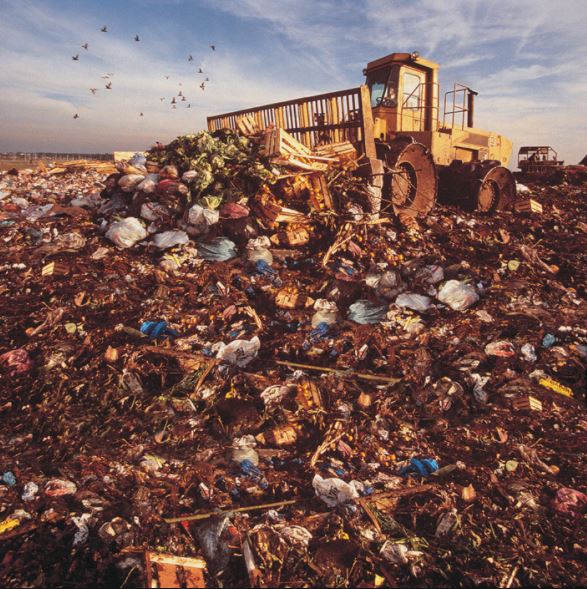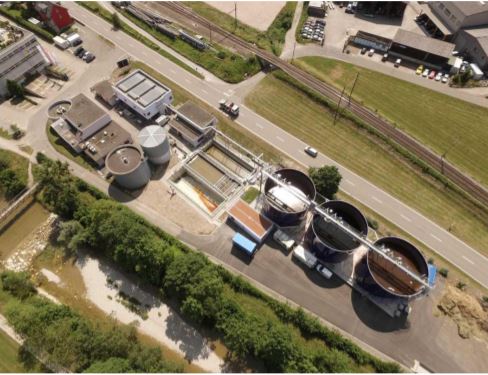With the help of edx.org we learned more about Sustainable Soil Management. We found the course (Module 7) which talked about soil pollution interesting. In this module, we learned about a distinction between point pollution and diffuse pollution. We also learned about the main sources of soil pollution, how different pollutants behave in the soil and why it is important to know about natural background levels of heavy metals in soils.
There are many different sources of soil pollution. Some main sources are industrial sources, urban sources as waste and traffic, and agricultural sources. These sources all release pollutants and these pollutants are then mostly transported in three different ways.
The first one is via air. Transportation via air is a very widespread, long range transport and it can be carried over thousands of kilometres to other places. The pollutant which are in the air are then deposited by rain fall, snow, or by dry position as particulates into the soils.
The second next important transport way is water. If waste water is not sufficiently cleaned, it ends up into the rivers and is there transported over thousands or hundreds of kilometres to many different cities and many even countries.
Could you imagine what would happen when dirty water would be used to water agricultural soils or what would happen if dirty rivers would overflow?
The third transportation way is a more direct pathway and that is land deposition. This means Pollutants can be directly deposited on land.

But the big question is how organic pollutants get into the soil and into our plants and into the water in the soil?
The answer this question, you need to imagine these pollutants are deposited on the soil and it rains afterwards. If this takes place on a smooth slope or a bigger slope, these pollutants can be transported with the rain water and end up into lakes and rivers downstream. What can also happen is that the pollutants can be transported in the soil water and can enter “clean” ground water sources.
Another thing that can happen is that the pollutants remain in the soil. This depends on the properties of the pollutants. Pollutants can be strongly adsorbed by the soil and they remain there for many years, depending on their decay. Organic pollutants undergo different durations of decay and these decays can vary between several hours and decades of years.
We hope you learned something new and interessing just as we did :)
Kind regards, Cindy & Alexa
Links: learning.edx.org
Bauma's wastewater treatment plant treats wastewater from the surrounding communities of Bauma, Fischenthal, Bäretswil, Hinwil, Hittnau, Wila and Wildberg.
Total connected inhabitants 7517
Bauma: 4547
Fischenthal: 2275
Bäretswil: 361
Hinwil: 12
Hittnau: 247
Wila: 52
Wildberg: 22
In the operating year 2019, a wastewater volume of 728,983m³ was treated. This is 157810 m³ more than the year
2018, which was very dry.
1969
The Bauma wastewater treatment plant (WWTP) was built in 1969 in Saland for a population of 6,000 and was renovated and expanded for the first time in the mid-1990s.
2035
The groundwater flow under the upper Töss supplies the Tösstal and Winterthur with first-class drinking water. In order to protect this from contamination in the long term, the Tösstal municipalities of Fischenthal, Bauma, Wila, Turbenthal, Zell, Weisslingen, together with the city of Winterthur and the AWEL have agreed to shut down the Bauma and Weisslingen wastewater treatment plants by 2035. The wastewater from the Tösstal valley would then be directed to the ARA Hard in Winterthur. It is planned to establish a joint institution under the name "Regional Wastewater Disposal Tösstal". In the referendum on 19 May, the foundation of the GA was clearly approved. The new institution is to be founded in 2020 and create the infrastructure for the upper Töss to be free of wastewater.

Picture: ARA Bauma (located in Saland)
Regards,
Alexa & Sandra (Bauma) & Chiara (Bäretswil)
In our cellar we have a heating and oil storage room (Heizungsraum und Heizöltank). Almost all the homes in our neighbourhood use oil for heating. Its sadly not the most eco-friendly way of heating.
We also have underfloor heating in most rooms in our house like the kitchen and bathrooms. This is very practical because it saves lots of space. (You don’t have a big heating unit in the centre of the room).
In the cold Winter months, we heat our house with a small wooden oven. It gives a nice cosy winter cabin feel. You’d be surprised at how much heat can be produced in this small fireplace (see picture below). We use local wood to support climate friendly transportation emissions.
More...
Photovoltaics
Photovoltaics (PV) is the conversion of light into electricity using semiconducting(1) materials that exhibit(2) the photovoltaic effect. The photovoltaic effect is the generation of voltage and electric current in a material upon exposure to light.
A photovoltaic system employs solar modules, each comprising a number of solar cells, which generate electrical power.
PV installations may be ground-mounted, rooftop mounted(3), wall mounted or floating. The mount may be fixed or use a solar tracker to follow the sun across the sky.

Did you know? The term "photovoltaic" comes from the Greek (phōs) meaning "light", and from "volt", the unit of electromotive force, the volt, which in turn comes from the last name of the Italian physicist Alessandro Volta, inventor of the battery.
More...
We made it happen! Our post is finally on don't waste my energy!
Please go check out our Post (click the link below) about Tiny Houses and the environmental movement that surrounds it.
https://dontwastemy.energy/tiny-houses-an-environmental-movement
We're really excited and happy with the result. The whole process was a great learning experience.
Don’t forget to leave a comment;)
Thank you and kind regards,
Alexa & Cindy

At first Wordpress seemed a bit complicated and it was very confusing. It has a few similarities to Office Word yet at the same time it was totally a different experience.
We had to ask our fellow classmates and Mrs. Sutter many questions at the beginning but with the time we got the hang of it and we were able to navigate the program on our own and finalize our post which are excited to share.
Regards,
Alexa & Cindy
Recently, we were even lucky enough to receive the great opertunity to interview Mr. Schumacher who is the managing director of Polyloft. Polyloft is a company based here in Switzerland which develops and builds Tiny Houses.
With this interview we got to know some new aspects and perspectives about the possible applications of Tiny Houses.
Below is our interview with Mr. Schumacher:
More...
Unfortunately, we did not have the time to update you on our current position of our project in the last two weeks, because we have been completely busy with our interview.
Update December 16th 2020:
- On December 2nd 2020 we were able to conduct a very interesting and successful interview with Mr. Schumacher from the company Polyloft.
Our next steps are:
- Evaluate and finalize the interview
- Fininsh researching
- start putting the whole project together
Kind regards,
Alexa & Cindy
First we asked ourselves if tiny House Living exists in Switzerland.
And to our surprise the answer was yes!
We Found two companies in Switzerland that specialize in tiny house living. Check out their websites:
We're planing on getting in contact with them to ask them some questions about their point of view in the tiny house movment. (Interview) More...
The Link below is our Presentation about Resources through History:
Resources Through history.pdf (1,29 mb)
Check out our survey:
https://de.surveymonkey.com/r/K7Y7T5C
In our presentation we talk about following topics: More...
I have a few colleagues and contacts from Ontario Canada that I could ask if they would like to participate in or help with a cooperation project. At the moment, due to the current situation with the coronavirus, they have a lot of collage and university courses to catch up on, so a time consuming collaboration would be a bit difficult. But they said that I could always ask them if I wanted their opinion on a certain topic or if they should/could participate in a survey.
